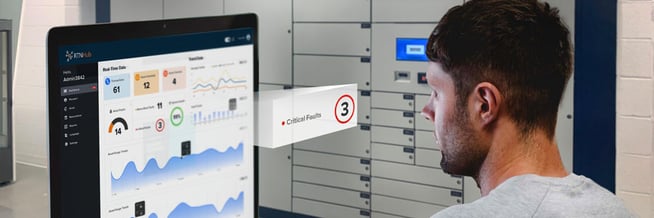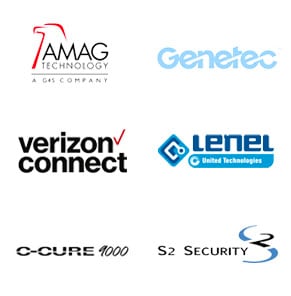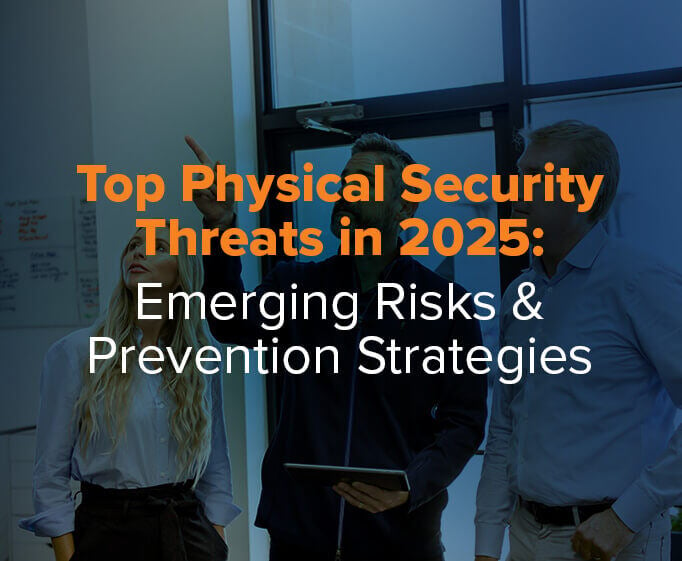By Jay Palter | April 17, 2024
Physical security systems have advanced significantly in the last couple of decades, helped by the latest generation of network and Internet of Things (IoT) technology. Gone are the days of security guards with clipboards and pens ticking off names against rosters for access control.
One approach many organizations are still exploring is integrating their various security and physical plant systems. A good physical security program is more than the sum of its parts, and the best way to get all components aligned is through careful integration.
What are integrated security systems?
In technology, integration means connecting different systems so you can manage them in unison. Security integration solutions are the technological platform you use to achieve this. They effectively become one facility-wide or organization-wide system. The goal of integrating security systems is to allow you to oversee all your physical security measures and IoT (Internet of Things) devices from a single interface rather than juggling multiple systems and databases.
Why is integrating your security systems important?
Security professionals need to be prepared for regular day-to-day operations and emergencies, like a fire. In that situation, it's critical to have all required exit doors unlocked simultaneously for a safe evacuation.
But, this can be difficult and expensive when you have a complicated mix of different security systems and devices that don't easily work together. Setting up an efficient evacuation plan can be a headache with such a mix of incompatible technology. Integrating your security systems simplifies this process, ensuring compliance with building codes and significantly improving the safety of your premises.
The advantages of integrated access control systems
Integrating access control systems into a single integrated security management platform offers many key benefits. Some of the most impactful include:
Reduced operating costs and administrative overhead

Combining two security systems into one can cut your operating expenses and management time in half. You’ll be able to manage users, assets, and access permissions through one system, streamlining assignments and reducing the need for separate administrative processes.
Enhanced security

Separately managing security systems can also lead to discrepancies in record keeping. For example, an administrator might update a user’s profile in one system but forget to copy that update to another, which can lead to security vulnerabilities. Integrated systems ensure consistent access control, automatically revoking asset access when a user’s privileges are terminated, maintaining a single, accurate source for all assets and spaces.
In-depth insight into user activity

Integrating asset and access management enables administrators to receive comprehensive alerts and insights into overdue asset returns or device tampering. This provides a more rounded understanding of user behavior than isolated systems can.
Simplified system access and new user onboarding

A unified access system enhances user experience by allowing a single credential set to authorize access to all spaces and materials. This also simplifies onboarding new employees, as they only have one set of credentials to requisition and train on.
Better scalability

An integrated approach to security system management simplifies adding or removing users, allowing for quick updates to user access based on departmental or positional changes.
Holistic security view

Just like piecing together a puzzle to reveal a unified picture, integrating security systems offers a comprehensive view of the security landscape by piecing together information from all your different source systems. That supports better decision-making, vulnerability identification, and risk management through real-time insights and analytics.

Security system integration process
Integrating your security systems is a strategic process that enhances your operations' overall safety and efficiency. Here's a detailed approach to ensure a seamless integration. While the details will vary based on various factors, including the specific technologies you’re working with, your budget, your facility, and your business network capabilities, this general process is versatile enough to act as a framework for any organization undertaking a security systems integration project.
Comprehensive assessment
Begin with a thorough evaluation of your existing security infrastructure. Identify the systems currently in place and pinpoint any gaps or redundancies. Understand which components are crucial for integration to enhance your security capabilities.
Also, identify all relevant stakeholders in the integration process. Who are the people impacted by integration, and who gets a say in how the new, unified system will operate? Affected user groups, your security team, IT, and even some external stakeholders like contractors and customers might need to be involved.
Planning
With a clear understanding of your current setup, develop a comprehensive integration strategy. This plan should detail which systems are to be integrated, prioritize the order of integration based on security needs and potential ROI, and outline any foreseeable obstacles and strategies to overcome them. Consulting with professional security system integrators at this stage can provide valuable insights and help craft a more effective plan.
Implementation
Implementing integrated security systems might involve installing new security technologies or modifying existing ones to ensure compatibility and efficient communication between systems.
This is also the stage where you need to train administrators and users of this system. You’re doing more than just putting new technology in place. This will be a platform to support critical business operations. Your integrated security systems will only operate when your people know how to use them.
Testing
After integration, engineers and your security professionals should extensively test the new unified security system. This involves simulating various security scenarios, like evacuations, intruder alerts, and more mundane but common events, like late equipment returns, to verify that all components work together and that the system meets the set security objectives. Pay attention to how integrated systems communicate and respond to different threats, making adjustments as necessary to ensure reliability.
Ongoing maintenance
Like any sophisticated technology, an integrated security system requires continuous maintenance to function effectively. Establish a regular maintenance schedule that includes system updates, hardware checks, and performance reviews. This proactive approach helps identify and resolve potential issues before they escalate, ensures your security system remains effective for the long term, and delivers a strong return on investment (ROI).
Ongoing evaluation
As part of maintenance, continually assess the performance of your integrated system against emerging security challenges and technological advancements. Be open to making iterative improvements to adapt to new threats and incorporate innovations to enhance your security posture.
Key considerations for selecting integrated access control systems
Selecting the appropriate integration system is critical for any business or organization, aiming for a solution that aligns with your needs, offers cost and operating efficiency, and ensures reliability. Consider the following key factors when comparing :
Compatibility with existing systems
Ensuring the new integration system works seamlessly with your current setup is essential. The ideal system should bridge the differences between access control, asset management, and other security and physical plant systems you use, facilitating smooth data exchange.
Integration complexity
The time and resources to complete different integrations can vary significantly. Some systems require initial manual setup with your access control system, including defining users and access levels. However, a fully integrated security system automates these steps, significantly reducing manual input by auto-syncing assets and their relationships from the start.
Customization and scalability
The system should be adaptable to your operational needs, allowing for customization of access levels and user permissions. Scalability is crucial for accommodating growth or changes within your organization without requiring a system overhaul.
Automation capabilities
Keeping systems synchronized is essential for security integrity. Whether updates occur on a fixed schedule or are triggered manually, your integration system should support automatic updates to maintain consistency across platforms.
Network security capabilities
Your selected system must ensure data encryption during transfer and employ stringent authentication and authorization protocols to safeguard sensitive information.
Support services
Reliable support is invaluable in resolving integration issues to avoid disruptions and additional costs. Effective support services from your provider ensure quick problem resolution.
Cost considerations
Evaluate the initial investment and ongoing costs against the operational efficiencies and savings the system is expected to deliver. It is ideal to have a system that fits within your budget while fulfilling all requisite security and operational needs.
Integrated security systems are greater than the sum of their parts
Integrating security systems can be a terrific way for businesses to optimize their management process, improve security within the organization, and maximize cost-effectiveness. However, the security hardware integration process is complex and requires careful planning and detailed implementation strategies. By following the steps outlined in this article and leveraging the tips for maintaining an effective integrated system over time, businesses will be well on their way towards achieving success with integrating their access control systems.
Learn More: Integrating Physical Access Control and Asset Control Systems

Ready to streamline workflows and improve productivity?
Have a look at our asset and key management integration options.
Subscribe to our blog

Jay Palter
Vice President of Marketing & Partnerships




